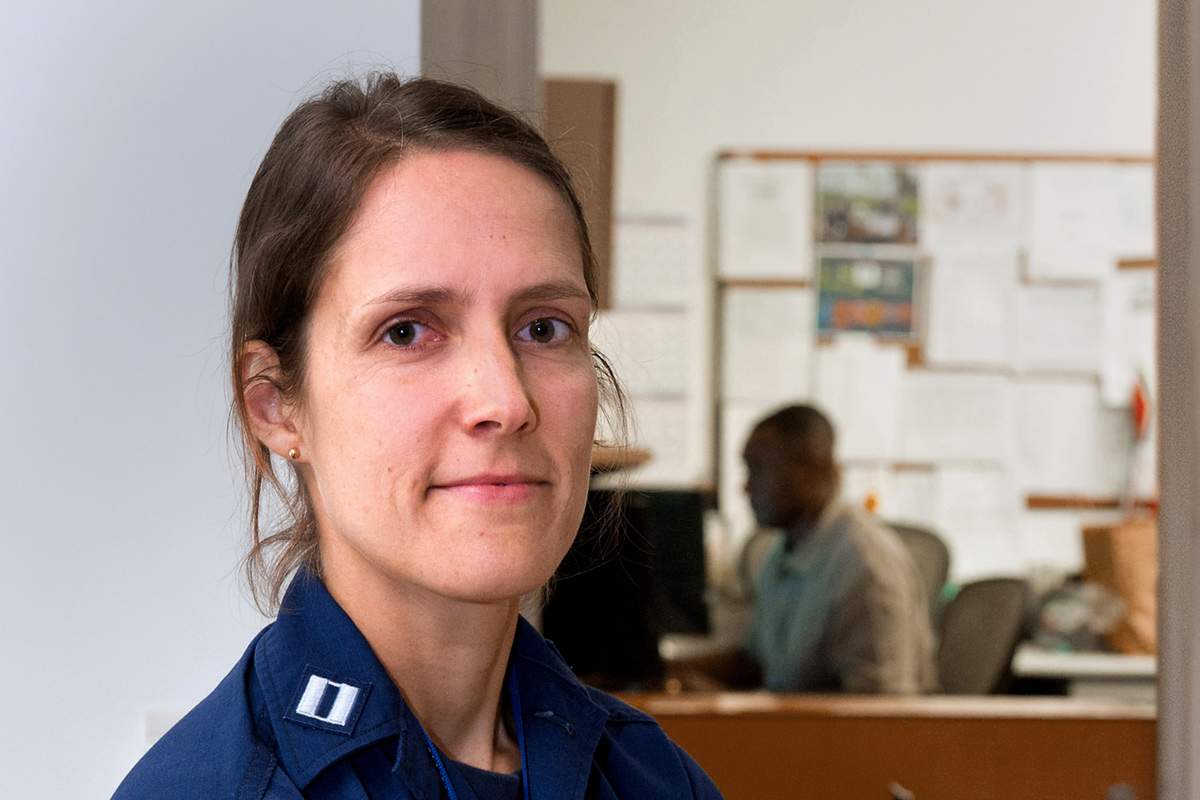On the Front Lines
What it takes to fight Ebola in West Africa

Photo courtesy of CDC/Jim Gathany.
Rebecca Day Merrill 01C was deployed from the US to Liberia on August 13 as one of more than fifty disease specialists sent to West Africa by the Centers for Disease Control and Prevention (CDC) to help slow the spread of Ebola, a virus that, as of October 8, the World Health Organization estimates has infected 8,400 people in West Africa, resulting in 4,033 deaths.
Although her position as an epidemic intelligence service (EIS) officer is with the International Micronutrient Malnutrition Prevention and Control Program, Merrill volunteered for the mission because she felt the epidemiology and field skills she developed as a Peace Corps volunteer and as a researcher in maternal and child health in Bangladesh could support critical Ebola response efforts.
“I took an opportunity to be able to focus more on disseminating information to vulnerable communities, health workers, and other populations at risk,” Merrill says. “I chose to go on this deployment to be able to provide dedicated time to supporting activities to end the transmission of Ebola.”
In Liberia, CDC team members worked twelve- to fourteen-hour days, seven days a week, to improve surveillance systems, field response efforts, education materials, and more to try to stem the outbreak.
The goal of the CDC mission is to support the government of Liberia, along with other partners, to end the Ebola outbreak by building capacity and systems to enable the region to fight this and other outbreaks as they may arise in the future, she says.
“The community is united to end the spread of Ebola and is working so hard to make that happen,” Merrill says. “I am inspired by all the hard work Liberians are doing to protect their countrymen. This deployment has changed me. I’ve seen struggles and desperation, as well as sheer joy when a family member is pronounced a survivor.”
Rebecca “Bex” Levine 13PhD, an EIS officer with the CDC’s Infectious Disease Pathology Branch, was also deployed to fight the outbreak by meticulously tracing the movements of Ebola victims to determine how they contracted the virus and with whom they came into contact.
“These are so much more than just numbers. Each one is its own heartbreaking story,” Levine said in an interview with CNN. “During our time there we were able to make improvements in contact tracing, but ultimately the need for resources is very, very dire. We need more beds in isolation centers and treatment centers, and we need more staff that are trained there to care for these patients.”



